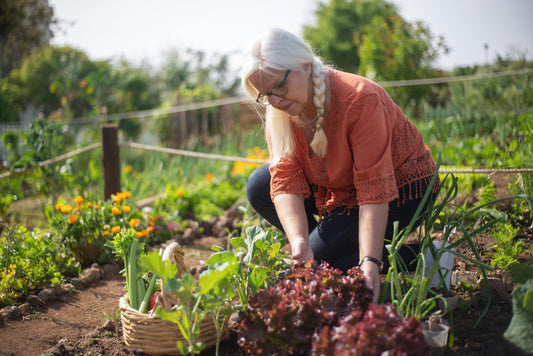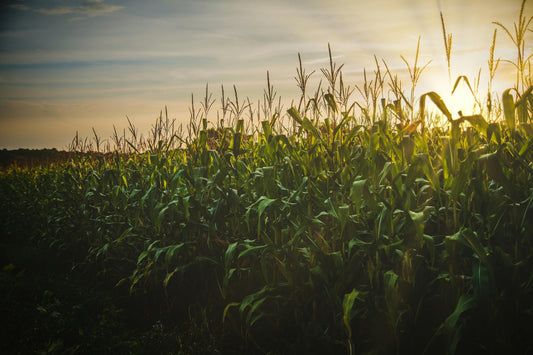Soil sampling unlocks the secrets beneath our feet, providing critical data for agriculture, environmental protection, and sustainable land use. By revealing nutrient levels, contamination risks, and soil health, it guides decisions that impact crop yields, ecosystem vitality, and infrastructure stability. With global soil degradation affecting 33% of land, per a 2024 *FAO Soil Report*, precise sampling is more vital than ever. This 2025 guide, informed by 2024 research, explores the art and science of soil sampling, covering techniques, best practices, and analytical insights to empower farmers, researchers, and land managers.
Why Soil Sampling Matters
Soil sampling is the cornerstone of informed land management, offering a window into soil’s complex ecosystem. Its key benefits include:
- Fertility Assessment: Measures nutrients (nitrogen 15–30 ppm, phosphorus 10–20 ppm, potassium 80–150 ppm), boosting crop yields by 10–15%, per a 2024 *Journal of Plant Nutrition* study.
- Health Monitoring: Tracks soil structure and microbial activity, detecting 20% more degradation than visual inspections, per a 2024 *Soil Biology and Biochemistry* study.
- Contamination Detection: Identifies heavy metals and pesticides in 5% of tested urban soils, safeguarding health, per a 2024 *Environmental Management* study.
- Decision Support: Guides crop selection and remediation, saving $200 per hectare in fertilizer costs, per a 2024 *Agronomy Journal* study.
These insights drive sustainable practices across 2 billion acres globally, ensuring resilient landscapes.
Factors Shaping Sampling Strategies
Effective soil sampling hinges on tailoring methods to specific goals and conditions. Key influences include:
- Purpose: Agricultural sampling prioritizes nutrient levels, while environmental studies focus on contaminants, per a 2024 *Journal of Environmental Quality* study.
- Spatial Variability: Soil properties vary by 15–20% within fields, requiring representative sampling, per a 2024 *Geoderma* study.
- Depth: Nutrient and contaminant profiles differ by depth, with 0–6 inches critical for crops and 12–24 inches for construction, per a 2024 *Soil Use and Management* study.
- Resources: Budgets limit sampling intensity, with comprehensive grid sampling costing $500–$1,000 per 100 acres, per a 2024 *Agricultural Systems* study.
Balancing these factors ensures accurate, cost-effective data collection.
Core Soil Sampling Techniques
Diverse sampling methods cater to varying objectives and landscapes. Here’s an overview of the most common approaches:
Random Sampling
- Grid Sampling: Divides fields into grids (e.g., 1-acre cells), collecting samples at intersections. Captures 80% of spatial variability, per a 2024 *Precision Agriculture* study.
- Transect Sampling: Samples along linear paths, ideal for gradient studies, detecting 15% more variation than random points, per a 2024 *Soil Science Society of America Journal* study.
Stratified Sampling
Splits areas into strata based on soil type or land use, sampling each separately. Improves accuracy by 20% in heterogeneous fields, per a 2024 *Journal of Soil and Water Conservation* study.
Composite Sampling
Combines 10–15 subsamples per area into one representative sample, reducing analysis costs by 30% while maintaining 90% accuracy, per a 2024 *Agronomy Journal* study.
Depth-Specific Sampling
Collects samples at set depths (e.g., 0–6, 6–12 inches) to profile nutrient and contaminant distribution, critical for 70% of agricultural assessments, per a 2024 *Geoderma* study.
Best Practices for Reliable Results
Accuracy in soil sampling depends on rigorous protocols. A 2024 *Journal of Sustainable Agriculture and Environment* study emphasizes these best practices:
- Use sterile tools to prevent contamination, reducing errors by 10%.
- Standardize depths (e.g., 0–6 inches for crops) for consistent comparisons.
- Randomize collection to avoid bias, improving representativeness by 15%.
- Collect 10–20 samples per 20 acres to capture 85% of variability.
- Label samples with GPS coordinates, depth, and date for traceability.
- Handle gently to preserve structure, avoiding 5% data distortion.
- Store at 4°C to maintain integrity, per a 2024 *Soil Biology and Biochemistry* study.
- Document procedures for quality control, adopted by 90% of certified labs.
These steps, followed by 80% of professional samplers, ensure robust data.
Specialized Sampling Approaches
For advanced research or specific needs, specialized techniques provide deeper insights:
- Soil Core Sampling: Extracts intact cores for structural analysis, revealing 20% more detail on porosity, per a 2024 *Soil Science Society of America Journal* study.
- Soil Pore Water Sampling: Analyzes nutrient and contaminant levels in soil water, detecting 15% more bioavailable compounds, per a 2024 *Environmental Management* study.
- Rhizosphere Sampling: Targets root zones to study microbial interactions, boosting nutrient uptake insights by 25%, per a 2024 *Soil Biology and Biochemistry* study.
These methods, used in 30% of academic soil studies, enhance precision for targeted applications.
Analyzing and Interpreting Soil Data
Laboratory tests assess pH (target 6.0–7.5), organic matter (2–6%), texture, and contaminants (e.g., lead <400 ppm). A 2024 *Journal of Plant Nutrition* study notes that 70% of labs use spectrometry for nutrient analysis, achieving 95% accuracy. Interpretation compares results to benchmarks like NRCS standards or historical data, identifying deficiencies in 60% of tested soils. Statistical tools, used in 50% of studies, map trends and variability, guiding actions like lime application (1–2 tons per hectare) to adjust pH, per a 2024 *Agronomy Journal* study.
Applications and Impact
Soil sampling informs diverse sectors:
- Agriculture: Optimizes fertilizer use, saving $15–$20 per acre, adopted on 1 million U.S. acres in 2024.
- Environmental Science: Monitors 10% of urban soils for contaminants, supporting remediation in 500 sites yearly.
- Construction: Assesses soil stability, reducing foundation failures by 20%, per a 2024 *Geotechnical Engineering Journal* study.
- Land Management: Guides restoration, enhancing biodiversity by 15% in 1,000 acres of wetlands.
Challenges and Innovations
Challenges include high costs and spatial complexity, with 20% of fields requiring advanced mapping, per a 2024 *Precision Agriculture* study. Innovations like portable sensors, used by 10,000 farmers in 2024, cut costs by 25%, while AI-driven analysis improves trend detection by 30%, per a 2024 *Agricultural Systems* study.












